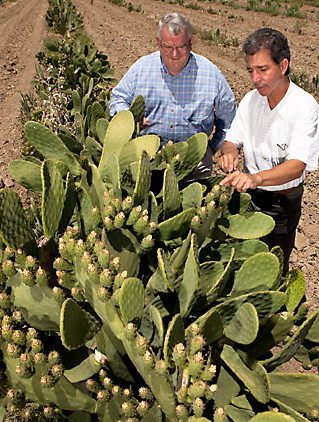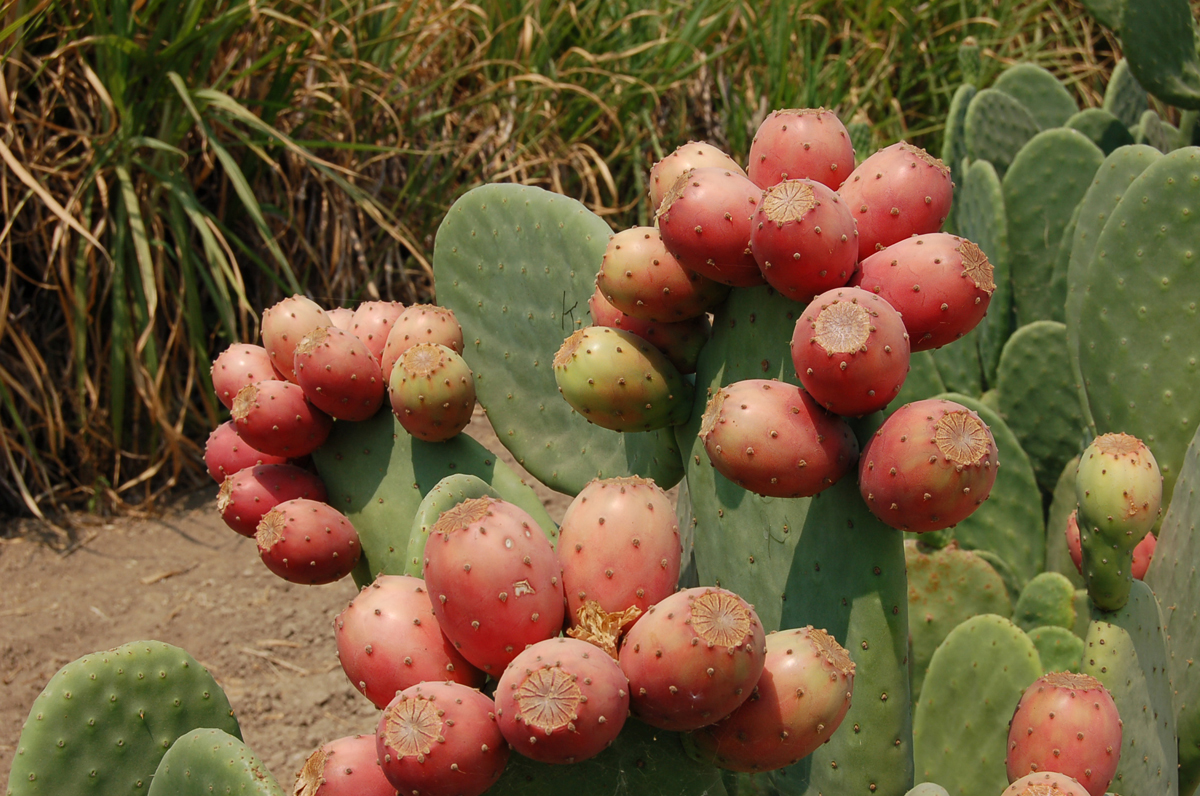California Agricultural Technology Institute
Cactus patents spark new opportunities for San Joaquin Valley's West Side growers
A five-year research project involving Fresno State, the U.S. Department of Agriculture and a commercial farm producer in central California has resulted in four new patents for cultivated varieties of cactus plants that can be grown in areas of the San Joaquin Valley with high selenium levels and limited water.
USDA research scientist Gary Banuelos, based at the department’s Agricultural Research Service center in Parlier southeast of Fresno, initiated the work back in 2009, wondering along with several colleagues whether Indian fig Opuntia, known by the common name of prickly pear cactus, could some day become a cash crop for farm producers on the valley’s West Side.
It appears that dream may soon become a reality.
Opuntia is native to the American Southwest and has been introduced in many other countries in the Mediterranean and western Pacific regions, Banuelos noted. It typically grows wild in desert and arid regions, producing fruit called cactus figs. The fruit can be peeled and eaten, or its pulp and juice used to produce jams, jellies, candy or other fruit products.
 After applying for and securing Fresno State funding from the California State University
Agricultural Research Institute (ARI) and the California Department of Water Resources
(DWR), Banuelos worked out a partnership with West Side grower John Diener of Red
Rock Ranch to establish a 15-acre commercial-sized trial plot featuring several clones
of Opuntia.
After applying for and securing Fresno State funding from the California State University
Agricultural Research Institute (ARI) and the California Department of Water Resources
(DWR), Banuelos worked out a partnership with West Side grower John Diener of Red
Rock Ranch to establish a 15-acre commercial-sized trial plot featuring several clones
of Opuntia.
Photo at left shows John Diener of Red Rock Ranch (left) and USDA researcher Gary Banuelos examining a stand of patented Opuntia cultivar.
A key to producing the cactus on the West Side is its potential ability to take up and volatilize selenium from West Side soils with minimum water, Banuelos noted.
“Introducing a new alternative crop for drainage impacted areas can help utilize naturally occurring selenium present in the soils and waters,” he said.
During the initial trials, harvested fruit and cladodes (the broad, thick leaves) were analyzed for their nutrition, especially organic forms of selenium, which as a trace element is needed by humans and animals as a nutritient.
A second phase of the project was to explore new and improved food products that could be produced from the fruit or cladodes.
“These fruits were initially processed [by former Fresno State Food Science Professor Gour Choudhury] into prototype ready-to-eat food products such as Cheerios, Cheetos, jams, juice, even wine,” Banuelos said. During the later course of the study, he partnered with Mercer Processing Co. in Modesto to develop trial batches of products. Based on the salt-tolerance and selenium accumulation traits of several different varieties, the research team selected the best-performing and most tolerant cultivars for use in processing.

Banuelos is gratified over the successful outcome of the study, and hopeful that Opuntia will provide new opportunities for utilizing West Side soils that have become too harsh for growing conventional crops.
“The ability of Opuntia to grow in drainage-impacted regions of the West Side with a minimum of water and to produce fruit with nutritive and productive value, make it potentially a high value crop for farmers to economically survive prolonged droughts or reductions in water allotments,” he said.
With sustained support from ARI and California’s DWR, Banuelos is continuing his Opuntia studies, focusing on the nutritional role of the selenium compounds and other healthy nutritional contents of fresh fruit products made from the cactus. He has presented his findings at several national and international conferences, and he has seen strong interest from many producers and processors. Assisting in the work were more than a dozen Fresno State students, working as either paid technicians or graduate assistants. Two of them completed master’s theses on the processing aspects of Opuntia.
For additional article information on Fresno State’s involvement in the patent process read the article on the FresnoStateNews.com website.
For additional details on project, contact Banuelos at gary.banuelos@ars.usda.gov.